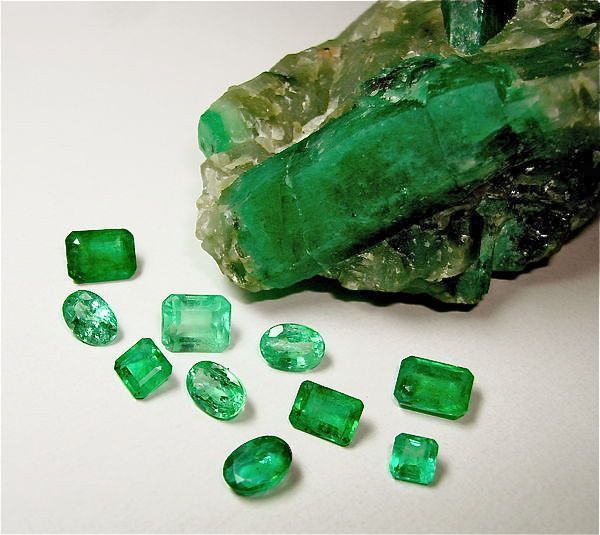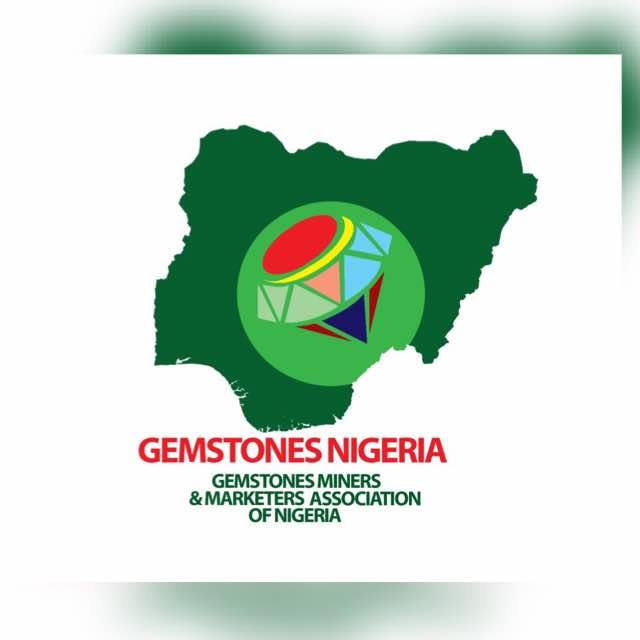This section provides information on various categories of gemstones.
We can also read some of the articles with links below to know more about Gemstones.
EMERALD

Emeralds are fascinating gemstones. They have the most beautiful, most intense and most radiant green that can possibly be imagined: emerald green. Emeralds In top quality are even more valuable than diamonds. The name emerald emanated from the Greek ‘smaragdos’ via the Old French ‘esmeralde’, and really just means ‘green gemstone’. Innumerable fantastic stories have grown up around this magnificent gem. Emeralds have been held in high esteem since ancient times. For that reason, some of the most famous emeralds are seen in museums and collections. The New York Museum of Natural History, for example, has an exhibit in which a cup made of pure emerald which belonged to the Emperor Jehangir is shown next to the ‘Patricia’, one of the largest Colombian emerald crystals, which weighs 632 carats. The green of the emerald is the colour of life and of the springtime, which comes round again and again, it has also been known as the colour of beauty and of constant love for centuries. The magnificent green of the emerald is a colour which conveys harmony, love of Nature and elemental joie de vivre. The human eye can never see enough of this unique colour. Pliny commented that green gladdened the eye without tiring it. Green is perceived as fresh and vivid, never as monotonous. And in view of the fact that this colour always changes somewhat between the bright light of day and the artificial light of a lamp, emerald green retains its lively vigour in all its nuances. Emerald is found in Plateau, Jos
RUBY

Ruby is the red variety of the mineral corundum, one of the hardest minerals on Earth. it is known as the king of gemstones and considered one of the most valuable gemstones on earth. The colour of ruby is red which signifies love, radiates warmth and a strong sense of vitality. It has everything a precious stone should have: magnificent colour, excellent hardness and outstanding brilliance. In addition to that, it is an extremely rare gemstone, especially in its finer qualities. A small town of Mong Hsu in the North-East of Myanmar, is where the most important ruby deposits of the nineties lie. Originally, it was believed that these rubies would hardly prove suitable for use in jewellery, since untreated Mong Hsu ruby crystals actually display two colours: a purple to black core and a bright red periphery. Only when it had been discovered that the dark core could be turned into deep red by means of heat treatment did rubies from Mong Hsu begin to find their way on to the jewellery market. Today, the Mong Hsu gemstone mines are still among the most important ruby suppliers. In the main, they offer heat-treated rubies in commercial qualities and sizes between 0.5 and 3 carats. The cutting of a ruby is essential: only a perfect cut will underline the beauty of this valuable and precious stone in a way befitting the ‘king of the gemstones’. However, a really perfect ruby is as rare as perfect love. If you do come across it, it will cost a small fortune. But when you find ruby, don’t hesitate: hang on to it!
Ruby is found in Kaduna State
SAPPHIRE

Sapphire is the blue variety of the mineral corundum. Although sapphires comes in some other different colours such as yellow, pink, orange and purple, blue remains the main colour. The blue colour is linked with the feelings of sympathy and harmony, friendship and loyalty. Sapphires symbolize loyalty and also give expression to peoples love and longing. he gemstones in the corundum group consist of pure aluminium oxide which crystallised into wonderful gemstones a long time ago as a result of pressure and heat at a great depth. The presence of small amounts of other elements, especially iron and chrome, are responsible for the colouring, turning a crystal that was basically white into a blue, red, yellow, pink or greenish sapphire. From the gemstone mines, the raw crystals are first taken to the cutting-centres where they are turned into sparkling gemstones by skilled hands. When cutting a sapphire, indeed, the cutter has to muster all his skill, for these gemstones are not only hard. Depending on the angle from which you look at them they also have different colours and intensities of colour. So it is the job of the cutter to orientate the raw crystals in such a way that the colour is brought out to its best advantage. Their value depends on their size, colour and transparency. With stones of very fine quality, these are, however, not the only main criteria, the origin of the gem also playing a major role. Neither is the colour itself necessarily a function of the geographical origin of a sapphire, which explains the great differences in price between the various qualities. The most valuable are genuine Kashmir stones. Burmese sapphires are valued almost as highly, and then come the sapphires from Ceylon. The possibility of the gemstone’s having undergone some treatment or other is also a factor in determining the price, since gemstones which can be guaranteed untreated are becoming more and more sought-after in this age of gemstone cosmetics. And if the stone selected then also happens to be a genuine, certificated Kashmir or Burmese, the price will probably reflect the enthusiasm of the true gemstone lover.
Sapphires are found in India, Burma, Ceylon, Thailand, Vietnam, Australia, Brazil and Africa. In Nigeria, sapphire can be found in
AQUAMARINE

Aquamarine is a fascinating beautiful gemstone that shines over an extraordinarily beautiful range of mainly light blue colours. The blue colour of aquamarine is symbolic and divine because it is the colour of the sky. Its light blue arouses feelings of sympathy, trust, harmony and friendship. It is one of the most popular and best-known gemstones that distinguishes itself by many good qualities. It is a gem that is almost entirely free of inclusions with good hardness and a wonderful shine. There is hardly any other gemstone in modern jewellery design which is refined in such a variety of ways as aquamarine. Whether it is fashioned as a clear, transparent gem in the classical step cut, or creatively cut in a more modern design, it is always fascinatingly beautiful. The light colour of aquamarine leaves the gemstone designer free to bring out the brilliance of the gem with fine grooves, notches, curves and edges. Aquamarine can be found in Oyo, Nasarawa, and Kaduna state.
TOURMALINE

Tourmalines are gems with an incomparable variety of colours. The reason, according to an old Egyptian legend, is that the tourmaline, on its long journey up from the centre of the Earth, passed over a rainbow. In doing so, it assumed all the colours of the rainbow. And that is why it is still referred to as the ‘gemstone of the rainbow’ today. There are tourmalines which change their colour when the light changes from daylight to artificial light, and some show the light effect of a cat’s eye. No two tourmalines are exactly alike. This gemstone has an endless number of faces, and for that reason it suits all moods. No wonder that magical powers have been attributed to it since ancient times. In particular, it is the gemstone of love and of friendship, which is said to render firm and long-lasting.
Tourmalines are mixed crystals of aluminium boron silicate with a complex and changing composition. The mineral group is a fairly complex one. Even slight changes in the composition cause completely different colours. Crystals of only a single colour are fairly rare; indeed the same crystal will often display various colours and various nuances of those colours. Tourmaline is also known for its marked dichroism and depending on the angle you look at it, the colour may be different or more or less intense. Tourmalines are found almost all over the world. There are major deposits in Brazil, Sri Lanka and South and Africa. In Nigeria, tourmaline are found in the following states; Kaduna, Nasarawa, and Osun
QUARTZ
Quartz is known to be chameleon of gemstones, standing in for more expensive gemstones ranging from diamond to jade. But the incredible variety of quartz is now beginning to be appreciated in its own right. There are different varieties of quartz which are used in the making of jewelry and hardstones.
Quartz is a defining constituent of granite and other felsic igneous rocks. It is very common in sedimentary rocks such as sandstone and shale and is also present in variable amounts as an accessory mineral in most carbonate rocks. It is a common constituent of schist, gneiss, quartzite and other metamorphic rocks. Quartz has the lowest potential for weathering in the Goldich dissolution series and consequently it is very common as a residual mineral in stream sediments and residual soils.
Topaz
Topaz is a fluorine aluminium silicate mineral that comes in yellow, yellow-brown, honey-yellow, flax, brown, green, blue, light blue, red and pink … and sometimes it has no colour at all.
The topaz has been known for at least 2000 years and is one of the gemstones which form the foundations of the twelve gates to the Holy City of the New Jerusalem





